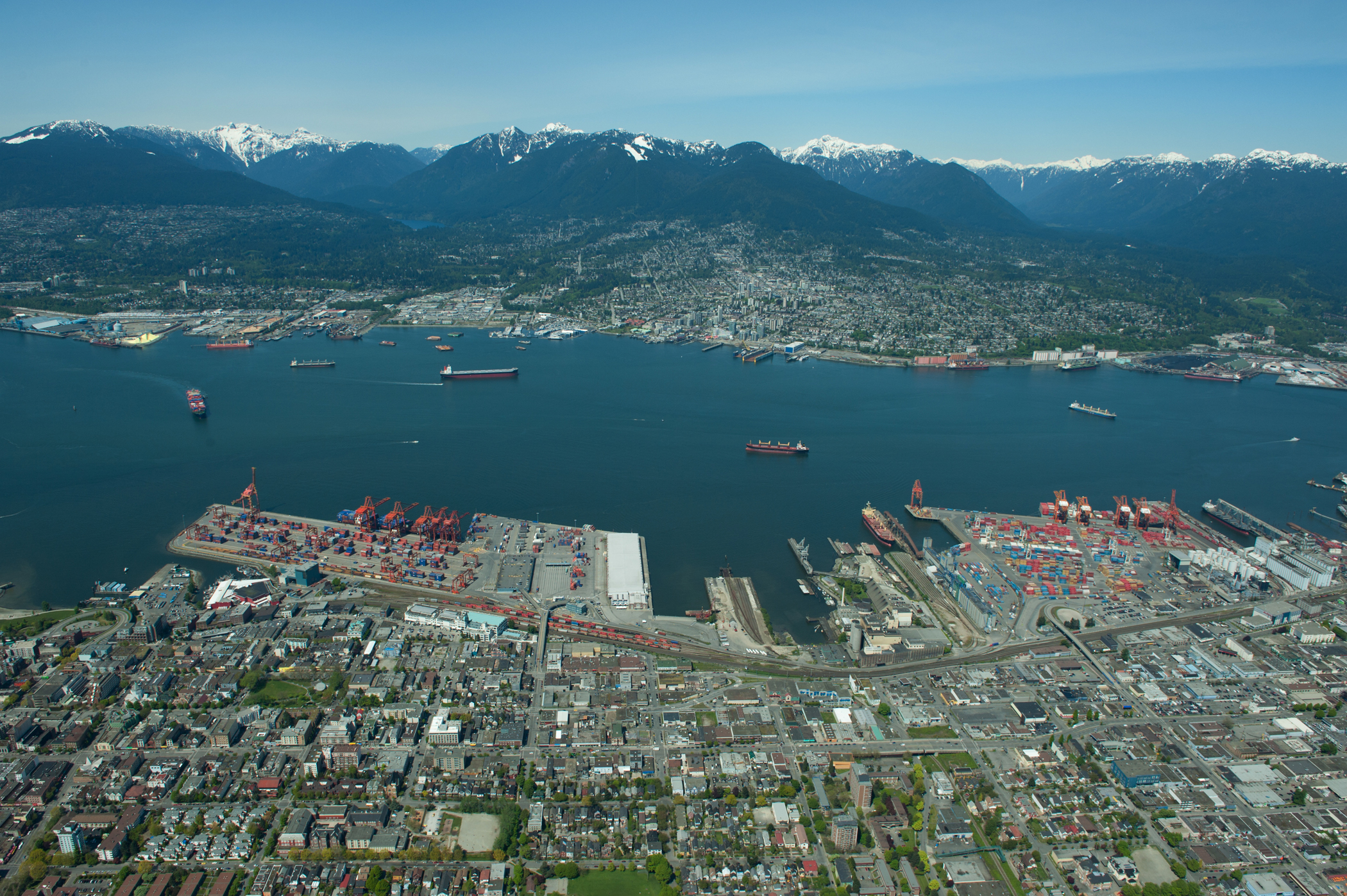Cargo volumes through the Port of Vancouver increased by 6% in 2023, as terminal operators and supply chain partners moved a record 150.4 million metric tonnes (MMT) of trade.
The Vancouver Fraser Port Authority’s 2023 cargo statistics, released today, show it was a mixed year at the Port of Vancouver, with growth in some sectors and softening in others. Notably, bulk and containerized exports, auto imports and cruise all grew—including near-record grain exports—while container imports softened in line with trends seen across the West Coast.
“We know reliable access to international markets is vital for Canadian exports and Canadian businesses—supporting jobs, investment and economic activity from coast to coast. I want to acknowledge the resilience of Port of Vancouver terminal operators and supply chain partners, as they moved record volumes of trade in 2023 against a challenging backdrop to support Canadians and their jobs and businesses,” said Peter Xotta, President and CEO of the Vancouver Fraser Port Authority, the federal agency mandated with enabling Canadian trade through the Port of Vancouver, while protecting the environment and considering local communities.
Almost as much cargo moved through the Port of Vancouver in 2023 as moved through Canada’s next five largest ports combined, while the port handled North America’s most diversified range of cargo—including bulk, containers, breakbulk and automobiles, as well as overseeing cruise.
“In 2023, we saw operations at the Port of Vancouver support a 12% increase in export volumes and enable trade with 142 different countries, including delivering a near-record Prairie grain harvest to world markets,” Mr. Xotta continued. “The record cargo and export volumes moved last year demonstrate that one of the port’s key strengths and competitive advantages continues to be its diversification—both in terms of the commodities it can handle and the countries it connects to.”
Trade last year was affected by a number of global and domestic challenges, including a cooling global economy, geo-political issues such as disruptions to the Panama Canal and Red Sea trade routes, and a strike that affected container, bulk, breakbulk and auto terminals at Port of Vancouver. The recovery from July’s 13-day strike by B.C. longshore workers—which directly impacted operations throughout the port aside from a few areas including cruise and bulk grain—was both steady and challenging, with fluidity largely restored in the fall.
Bulk exports increased 13% in 2023, compared to 2022, to reach a record 91.5 MMT—including increases in grain, sulphur, coal and petroleum product volumes. Nine bulk grain terminals at the port helped to export 14.7 MMT of wheat to 38 different countries, a 52% year-over-year increase, while canola exports increased 36% to 7.0 MMT and specialty crops grew 30% to 4.0 MMT. Canadian grain export volumes increased sharply in 2023 because a bumper crop season was preceded by a drought-affected season.
Automotive was up 36% in 2023 as the sector returned to pre-pandemic volumes, with supply chain and production issues easing and consumer demand for vehicles remaining resilient. Breakbulk volumes were down 7%, including a 25% drop in foreign breakbulk volumes due largely to the cooling economy and a fall in metals imports, as well as exports of forestry products shifting to containers.
Cruise had another strong season, with the Canada Place cruise terminal at the Port of Vancouver having 15 of its 20 busiest days ever in 2023, as it welcomed a record 1.24 million passengers and 332 ship visits.
“Vancouver’s cruise sector continues to be a success story with further growth in 2023—bringing more visitors than ever before to our world-class city and supporting local businesses and jobs, particularly in hospitality and tourism,” Mr. Xotta said. “We look forward to continuing to partner with cruise lines and industry to build the capacity and sustainability needed to keep this important sector thriving.”
Container volumes were down 12% year-over-year, in line with trends seen across North America’s West Coast, as a cooling global economy and overstocked retailer inventories impacted imports (laden inbound containers were down 13%). Containerized exports (laden outbound) continued to recover from pandemic-era disruptions and were up 7% in 2023, as Canadian businesses used the increased availability of empty containers to deliver goods to markets across the globe.
“While there was a softening of container volumes moving through the Port of Vancouver in 2023, Canada’s container sector remains on a long-term growth trajectory and we saw encouraging signs of recovery in Q4 as year-over-year volumes started to grow,” Mr. Xotta said. “We continue to partner with industry and government to ensure the port has the capacity needed to support Canada’s long-term trade needs, including expanding terminal capacity and investing in digital tools, collaboration and data sharing to ensure existing infrastructure is used to its maximum potential.”
(Port of Vancouver photo)





